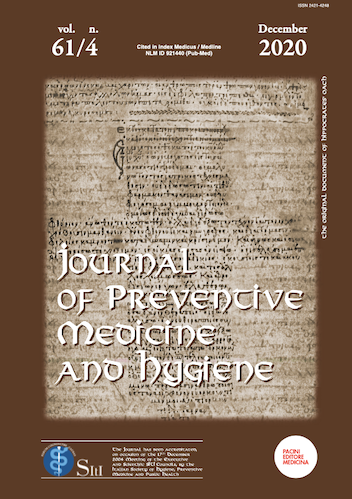Abstract
Introduction: The purpose of this study was to assess the perception and beliefs of dental healthcare providers towards usage of different type of gloves.
Methods: A self-administered questionnaire was distributed among a total of 241 participants out of which 198 participants (77 interns, 58 dental post-graduate students (PG) and 63 dental faculty members) returned completed questionnaire (response rate of 82.15%). The questionnaire comprised of questions on dental professionals’ preferences for certain types of gloves and the reasons for these preferences, as well as determining their knowledge, beliefs and behavior concerning the use of dental gloves as a means of barrier protection.
Results: Dental faculty members had a better knowledge regarding use of gloves as compared to dental PG students and interns. Most of the study participants preferred certain types of gloves for the purpose of better protection followed by comfort. Most of the participants believed that gloves provide full protection as long as there is no visible tear (interns 70.1%; PG students 50%; faculty members 60.3%). Most of the interns (42.9%) and PG students (41.4%) did not know about the fact that petroleum based products affect the integrity of the gloves. 2.6% interns, 29.3% PG students and 20.6% faculty members reported that they would not change gloves during an uninterrupted three-hour long procedure.
Conclusion: Most of the interns and PG students had poor knowledge regarding usage of gloves which calls for an action on the part of educators to educate and train dental professionals regarding proper infection control practices.
References
Mahboobi N, Porter SR, Karayiannis P, Alavian SM. Dental treatment as a risk factor for hepatitis B and C viral infection. A review of the recent literature. J Gastrointestin Liver Dis 2013; 22: 79-86.
Council on Dental Materials and Devices, Council on Dental Therapeutics. Infection control in the dental office. J Am Dent Assoc 1978; 93: 673–677.
Johnson S, Gerding DN, Olson MM, Weiler MD, Hughes RA, Clabots CR et al. Prospective, controlled study of vinyl glove use to interrupt Clostridium difficile nosocomial transmission. Am J Med 1990; 88: 137e140. doi: https://doi.org/10.1016/0002-9343(90)90462-M
Tenorio AR, Badri SM, Sahgal NB, Hota B, Matushek M, Hayden MK et al. Effectiveness of gloves in the prevention of hand carriage of Vancomycin-resistant Enterococcus species by healthcare workers after patient care. Clinical Infectious Diseases 2001; 32: 826-829. doi: doi.org/10.1086/319214.
Joeng SJ, Kim JI, Kim JY, Ban SH, Um JY, Jeong MJ et al. Effectiveness of Glove for the Prevention of Microbial Contamination during the Dental Clinical Practice. J Dent Hyg Sci 2014; 14(4): 537-545. doi: 10.17135/jdhs.2014.14.4.537.
Olsen RJ, Lynch P, Coyle MB, Cummings J, Bokete T, Stamm WE. Examination gloves as barriers to hand contamination in clinical practice. J Am Med Assoc 1993; 270: 350-353. doi: 10.1001/jama.270.3.350.
Huber MA, Terezhalmy GT. Adverse reactions to latex products: preventive and therapeutic strategies. J Contemp Dent Practice 2006; 7: 97–106.
Rego A, Roley L. In use barrier integrity of gloves: latex and nitrile superior to vinyl. Am J Infect Control 1999; 27: 405–410. doi: 10.1016/S0196-6553(99)70006-4.
Korniewicz DM, Laughon BE, Cyr WH, Lytle CD, Larson E. Leakage of virus through used vinyl and latex examination gloves. J Clin Microbiol 1990; 28: 787–788.
Korniewicz DM, El-Masri M, Broyles JM, Martin CD, O’Connell KP. Performance of latex and nonlatex medical gloves during simulated use. Am J Infect Control 2002; 30: 133–138. doi: 10.1067/mic.2002.119512.
Kerr LN, Chaput MP, Cash LD, O’Malley LG, Sarhani EM, Teixera JC, et al. Assessment of the durability of medical examination gloves. J Occup Environ Hyg 2004; 9: 607–612. doi: 10.1080/15459620490491803.
Fischer M, Reddy VR, Williams FM, Lin KY, Thacker JG, Edlich RF. Biomechanical performance of powder-free examination gloves. J Emerg Med 1999; 17: 1011–1018. doi: 10.1016/S0736-4679(99)00133-X.
Patel H, Fleming GJ, Burke FJ. Puncture resistance and stiffness of nitrile and latex dental examination gloves. Br Dent J 2004; 196: 695–700. doi: 10.1038/sj.bdj.4811353
Sawyer J, Bennett A. Comparing the level of dexterity offered by latex and nitrile safeskin gloves. Ann Occup Hyg 2005; 50: 289–296. doi: 10.1093/annhyg/mei066.
Jordan SL, Stowers MF, Trawick EG, Theis AB. Glutaraldehyde permeation: choosing the proper glove. Am J Infect Control 1996; 24: 67–69. doi: 10.1016/S0196-6553(96)90001-2.
Mellstrom GA, Lindberg M, Boman A. Permeation and destructive effects of disinfectants on protective gloves. Contact Dermatitis 1992; 26: 163–170.
Tanner J, Parkinson H. Double gloving to reduce surgical cross-infection. Cochrane Database Syst Rev. 2006 19; (3): CD003087. doi: 10.1002/14651858.CD003087.pub2.
Kanjirath PP, Coplen AE, Chapman JC, Peters MC, Inglehart MR. Effectiveness of gloves and infection control in dentistry: student and provider perspectives. J Dent Educ 2009; 73: 571-580.
Taylor JS. Other reactions from gloves. In: Mellström GA, Wahlberg JE, Maibach HI (eds). Protective gloves for occupational use. USA: CRC Press Inc; 1994. 255–265.
Merchant VA, Molinari JA, Pickett T. Microbial penetration of gloves following usage in routine dental procedures. Am J Dent 1992; 5: 95–96.


